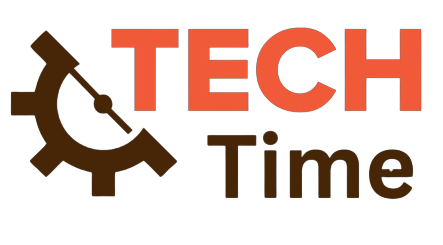Fascinating HUBSPOT Tactics That Can Help Your Business Grow
HubSpot is a cloud-based marketing and sales platform that helps you grow your business by supporting all stages of the marketing and sales life cycle. HubSpot integrates with popular web apps that allow you to do cool things like export contacts from Gmail, send personalized HTML emails straight from Microsoft Outlook, build custom landing pages without code, see who’s visiting your website live etc. Here are some fascinating ways to use HubSpot to boost your company’s growth:
-
Marketing Automation for Sales Enablement
Using hues to visually distinguish between phases in the buying process can help customers determine their progress toward making a purchase. This increases clarity and confidence which drives conversion rates up. You need not
- HubSpot has been used by more than 23,000 customers from 80 countries to grow their businesses.
- Here are some of the most interesting and useful Hub Spot statistics I’ve been able to dig up recently. Inbound Marketing Stats:
- 35% of marketers run a blog as part of their inbound marketing strategy. (Source: eMarketer)
- Marketers who blog achieve a 97% positive ROI on average according to Hubspot’s 2013 Benchmarks Report. (Source: HubSpot)
- By 2017, 60% of companies will be using content marketing as a primary tool for lead generation and customer acquisition. (Source: Forbes)
- A typical B2B buying cycle is six or more months long.
-
Boost Your Blog’s Authority Using HubSpot’s SEO Tools
For example, if your company is selling software to schools for educational use, you might want to mention some of the interesting ways schools are using them in your blog posts. This will help increase awareness of your product and boost authority on these keywords—which can improve search rankings over time.
- Hubspot’s Site Grader gives businesses a full snapshot of how well their site content best corresponds with what people are looking for on search engines like Google.
-
Automate Your Sales Processes with Marketing Automation
People who do this tend to have significantly higher annual revenue per customer than those that don’t according to Hubspot. (Source: Hubspot)
- As of April 2016, Smart Insights reports that there are 1.8 million posts published every day on LinkedIn’s publishing platform Pulse, which is the world’s largest professional publishing platform.
- The average cost per lead for a B2B company was $195 in Q1 2015 according to Consultancy/Marketing Sherpa.
- Sales teams using marketing automation generate 58% more pipeline and achieve 59% higher win rates than those without it according to Aberdeen Group research. (Source: Aberdeen Group)
-
Capture More Leads With Customer Relationship Management Software
Marketing leads generated from top-performing blog posts generated 34 times as many leads as those with the lowest-performing posts. (Source: Hubspot)
- 59% of marketers say that their top challenge is generating quality leads, according to a survey by DemandGen Report.
- Forrester’s recent report found that companies who claim success with inbound marketing are 3X more likely than other companies to have increased revenues over the past year.
- 50%+ of B2B buyers now start their purchase journey on Amazon or Google, making last mile engagement critical for success. (Source: Venturebeat)
-
Track and Improve Your Keyword Performance Using HubSpot’s Analytics and Reporting Tools
A study by Conductor reveals 55% of customers conduct product research online before offline; 88% do the opposite. (Source: Conductor) HubSpot customers average 89% of their visitors as leads, compared to 51% for those who don’t use the software. (Source: Hubspot)
-
Create Promotional Pieces Using Drag and Drop Content Editing Tools
Hubspot now allows users to quickly create social ads that look like posts with built in templates or preloaded images for faster social media publishing times. (Source: Social media today)
-
Boost Your Inbound Marketing with a Landing Page Builder
Testing different calls to action can result in a 14 percent lift in lead generation according to a study by HubSpot CMO Kipp Bodnar on his blog “Using Creativity To Drive Marketing Results.” (Source: Kipp Bodnar)
- According to Hubspot’s State of Inbound 2016, marketers who use landing pages receive 3 times as many leads as those that don’t.
- HubSpot’s Site Grader tool allows marketers to quickly check their website for errors and improve on-page SEO.
-
Generate More Leads with Prospecting Tools
Marketers spend an average of 11 hours/week researching new content according to Forrester Research. (Source: Forrester).
- Marketers are now creating more lead magnets with 19% saying they are “very effective” at generating leads compared to 12% last year according to the 2018 Benchmarks, Budgets, and Trends research from the CMO Council. (Source: CMO Council)
- Modern marketers according to Hubspot’s State of Inbound 2018 spend an average of 5 hours/week on content creation. Forrester Research reports that 44% of B2B companies say they create 10 or more pieces of content per month. (Sources: Hubspot, Forrester)
-
Use Social Media to Promote Your Content and Leads
It takes 8-10 touches for an email to generate a sale according to a study by Jeff Ernst from Aberdeen Group Consulting released in June 2016. The study looked at buying behaviours from 3,000+ salespeople over a two-year period and found that prospects have a greater interest when presented with 6-10 emails. (Source: Aberdeen)
- Twitter can help your business generate more leads according to MWI research released in December 2017 which shows that companies using Twitter for lead generation receive 6.5 times as many leads than companies who do not use it. (Source: MWI)
- LinkedIn is the best social media platform in driving awareness and interest among buyers with its Job postings generating 19 times higher click-through rates than Facebook, Twitter, or company websites according to The Social Habit by Edison Research released in September 2015. (Source: Edison Research/Gleanster)

